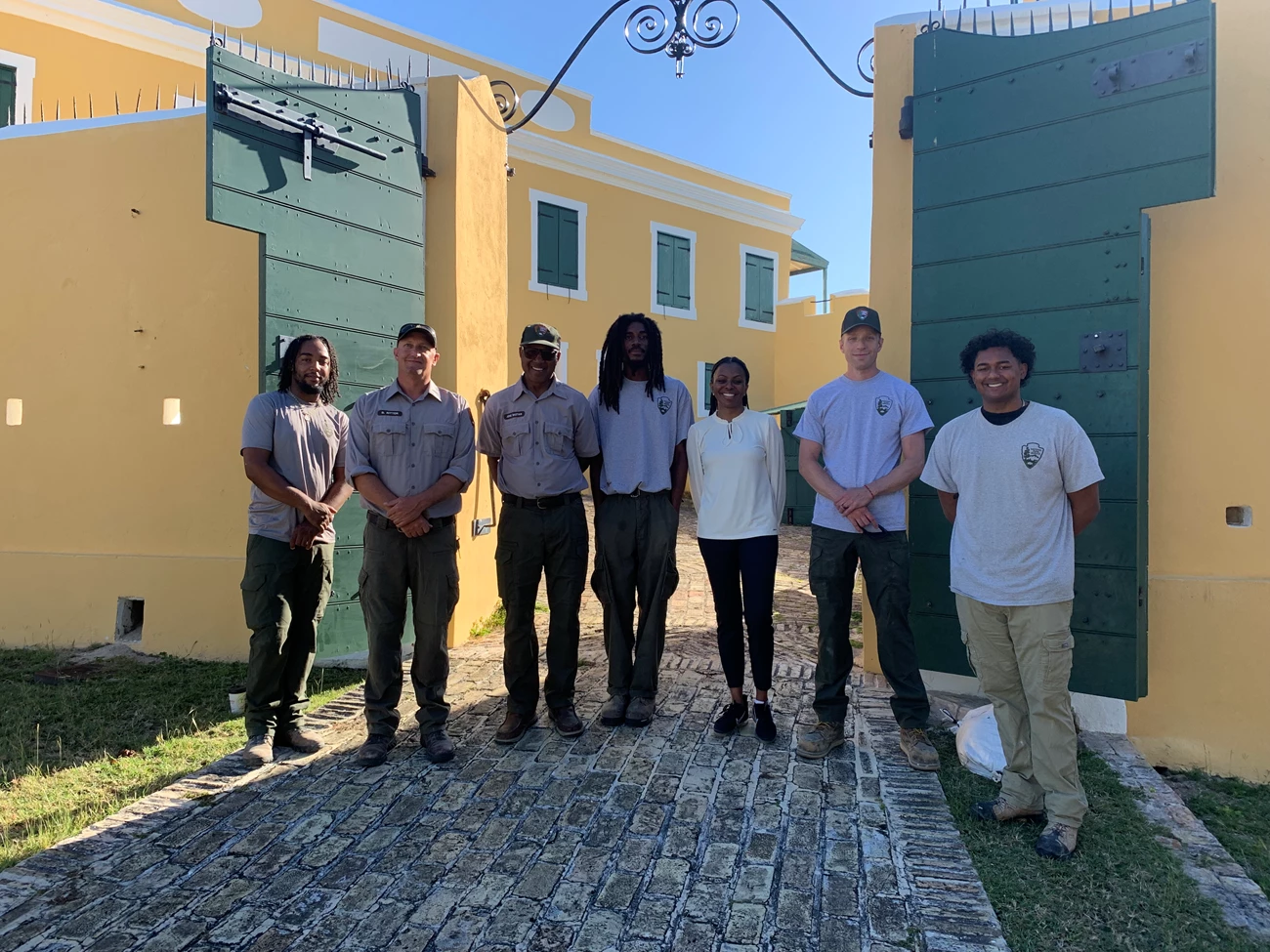Last updated: November 7, 2023
Article
From Marines to Monuments, Learn About Mark Barry’s Unique Journey in Preserving Park History
Mark Barry, Exhibits Specialist, Historic Preservation Training Center, SE Region Caribbean Section

Can you share a bit about your military service and what led you to join the National Park Service?
I enlisted in the U.S. Marine Corps in 2009 and served with 7th Engineer Support Battalion and Marine Wing Support Squadron 373. I was drawn to the National Park Service for many of the same reasons I enlisted in the military: challenge, adventure, and being a part of a mission greater than myself.
How did your military experience prepare you for a role at the National Park Service, especially in terms of skills and values?
The core values and leadership traits that were engrained during my Marine Corps service are lifelong assets. There’s a variety of acronyms, slogans, and mottos that Marines use to describe their values but “mind over body” has always been one of my favorites. Once your mind is committed to a goal, then there is no challenge too great to face.
Many veterans bring a diverse set of skills to their work. Can you highlight a particular skill or experience from your military service that you find especially valuable in your current role?
Improvisation. The best laid plans of mice and men often go awry. No matter how bulletproof a plan may seem, there will always be unknown variables. Whether that is a tool breaking, personnel calling in sick, inclement weather, etc., having the ability to improvise, adapt, and overcome is critical, especially as a project leader.
What preservation projects have you been involved in at the National Park Service, and how do you feel your work contributes to the broader mission of the NPS?
The National Park Service has a wide variety of cultural resources and historic assets that demand preservative work. I’ve been fortunate enough to be able to help preserve these structures, some of which are nearing 300 years old, so that future generations will get continued enjoyment and education from them.

NPS

NPS
Can you share a particularly proud or rewarding moment you've experienced while working on a preservation project?
It is always rewarding to step back at the end of a project and see what the hard work of the team has accomplished. An interesting exception to this was when we excavated over a million pounds of sand from the Fort Pickens roof in order to apply a sealant, and then re-buried the roof. Although there was virtually no visible difference between the before and after, the crew had been the only ones to physically touch that roof in nearly 200 years. That was a very cool realization.
The NPS has a diverse range of roles. Can you describe how your current position allows you to apply different aspects of your background and expertise?
My military service and formal education were engineering focused; I spent several years as a land surveyor preserving boundary monuments and property lines in the Oregon mountains; I supervised facility and machine maintenance for several years in Colorado. And although none of my previous positions were directly related, I now use bits and pieces of all those careers to plan, organize, and execute historic preservation projects with HPTC.

NPS
Preservation projects often have a positive impact on local communities. How do you see your work contributing to community well-being?
The majority of projects that I’ve worked on are in heavily trafficked parks on assets that the community has strong ties to. Visitors will often show interest and appreciation for the work that is being done, which is a very tangible sign of the community impact. I believe the presence of HPTC has a more visceral effect on visitors as well; it helps them realize that the assets are not to be taken for granted, that they do need care and they should be cherished.
As we approach Veterans Day, what would you like the public to know or understand about the contributions of veterans working in the National Park Service?
Many veterans continue federal service after the military, and in my experience that is because they enjoy contributing to a meaningful mission and being part of a cohesive team, both of which are found with the NPS. The National Park Service is greater than the sum of its parts and veterans can see and appreciate that.
